Shooting Snowflakes
[gallery ids="12370,12369,12368,12367,12366" type="slideshow"]
The world is tucked neatly into a warm white blanket. Under the snow slumber the insects and arachnids I love to photograph during warmer times, so I am turning to my winter pastimes of preserving #lovelydeadcrap and shooting snowflakes.
The problem with shooting snow... ok, there are several problems. One is that each flake is tiny, requiring me to set up a macro photo rig - even the new macro lens I was excited to work with wasn't quite enough for my satisfaction in getting up close and personal with the delicate crystals. Yesterday's session wound up with a rig that would probably give real photographers the vapors - I had the macro, a lens extension (31 mm) and a ring light... and I was shooting freehand. Next time we get decent snow I'm going to take the time to get the tripod with macro slider set up to see if I can get some well-focused shots, because shooting freehand I get maybe one in ten that is usable at all. And none of what I got make me really happy with them.
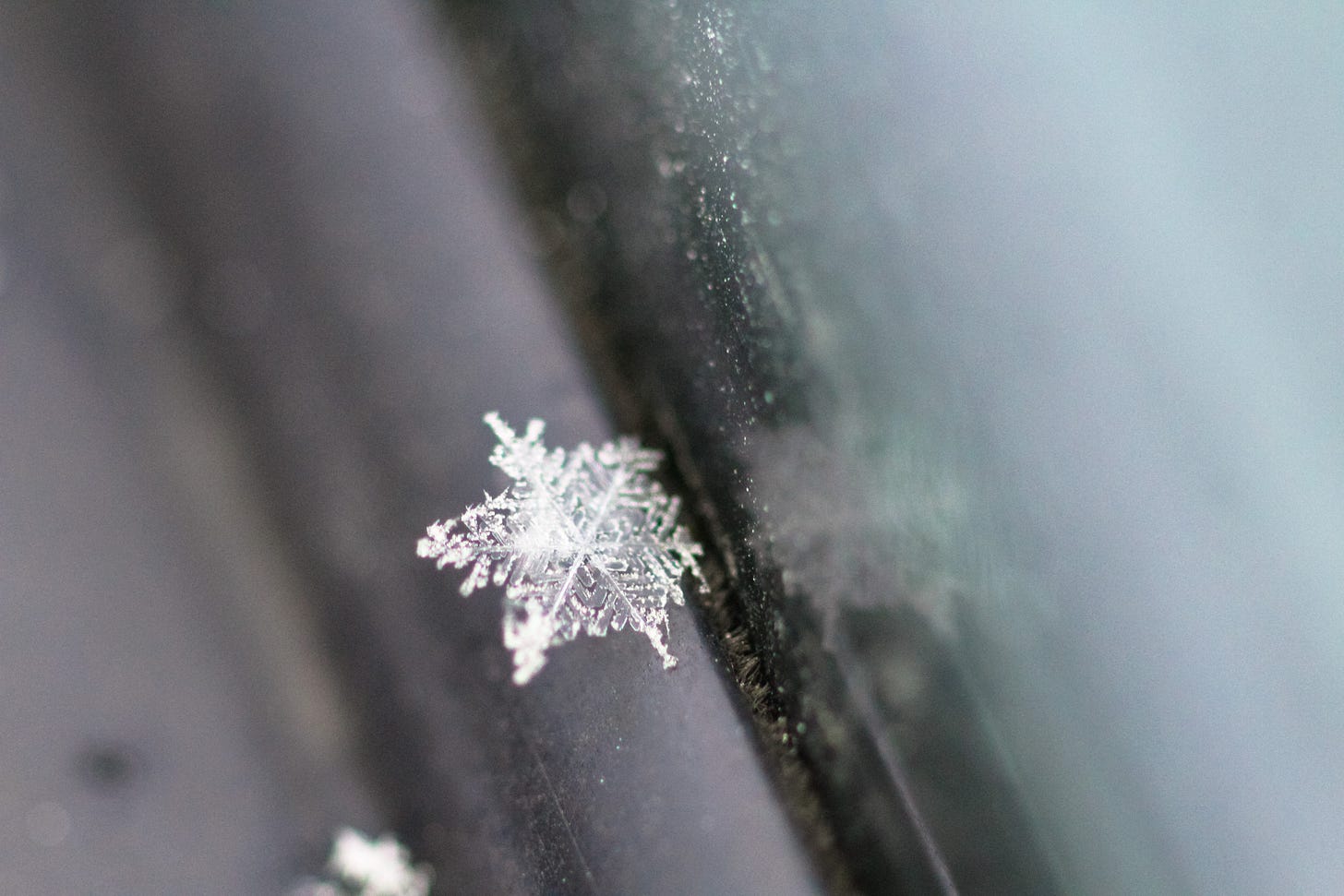
For scale: this is a big flake, and that's the rubber gasket on my car's passenger window.
If you are curious what the experts do with snowflakes, I wrote about it a while back. Some of them get absolutely amazing portraits of the ultimate ephemeral. Me, I get what are the equivalent to spontaneous snapshots.
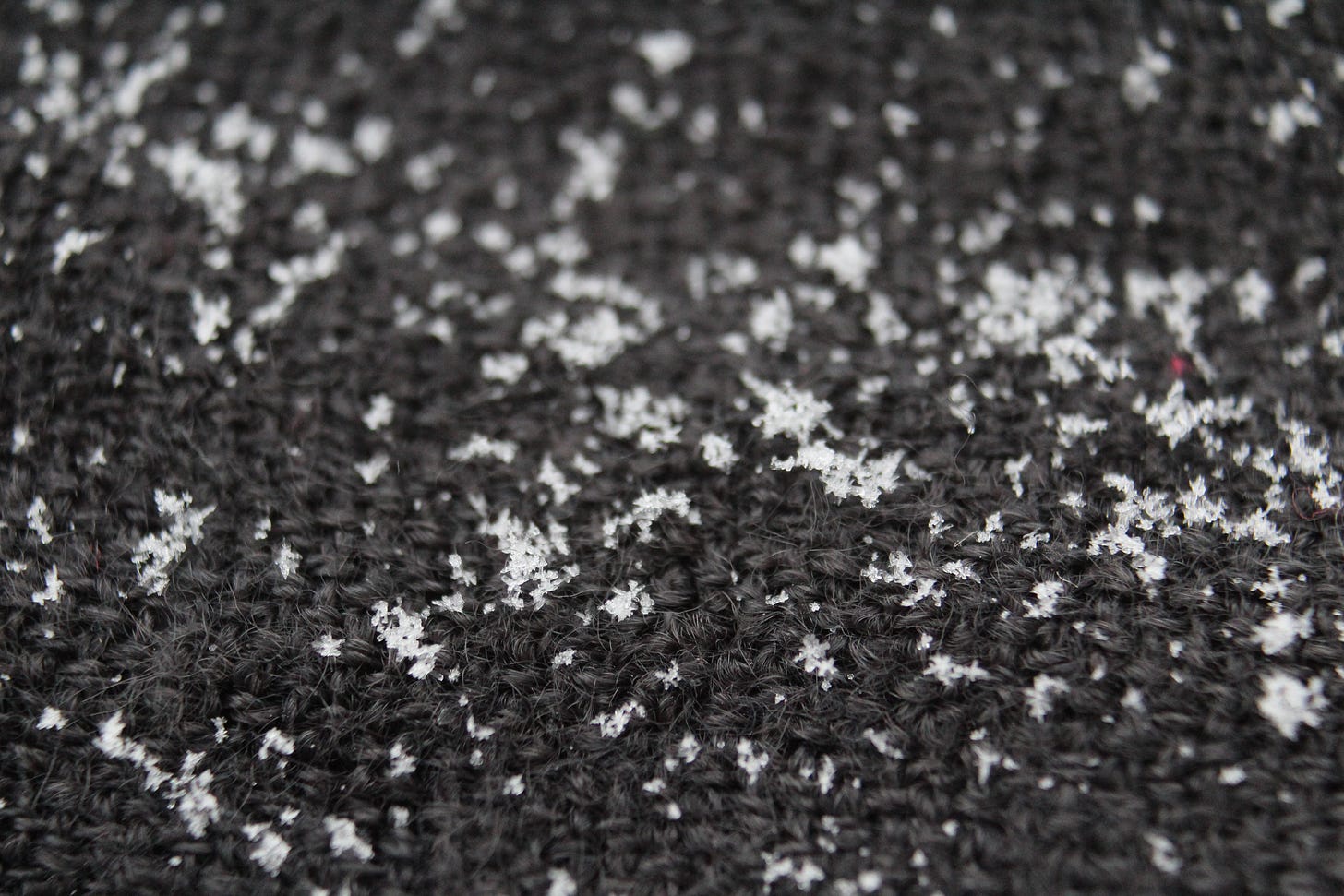
Macro lens alone, and as you can see this, pellet snow doesn't have the beautiful crystal forms.
The second problem to shooting snow is that not all snow is the same. Snow falling out of the sky takes many forms, and I'm not just talking about the concept that each snowflake is unique. Some snow falls as pellets of tiny crystals accreted together as they plunge through the atmosphere. Other snow is given the time, moisture, and perfect conditions to grow into big, beautiful crystals that are delicately detailed. Still other snow starts out as big flakes, falls through another moist layer, and the crystals branch off in odd directions - you'll see examples of that in yesterday's shots.
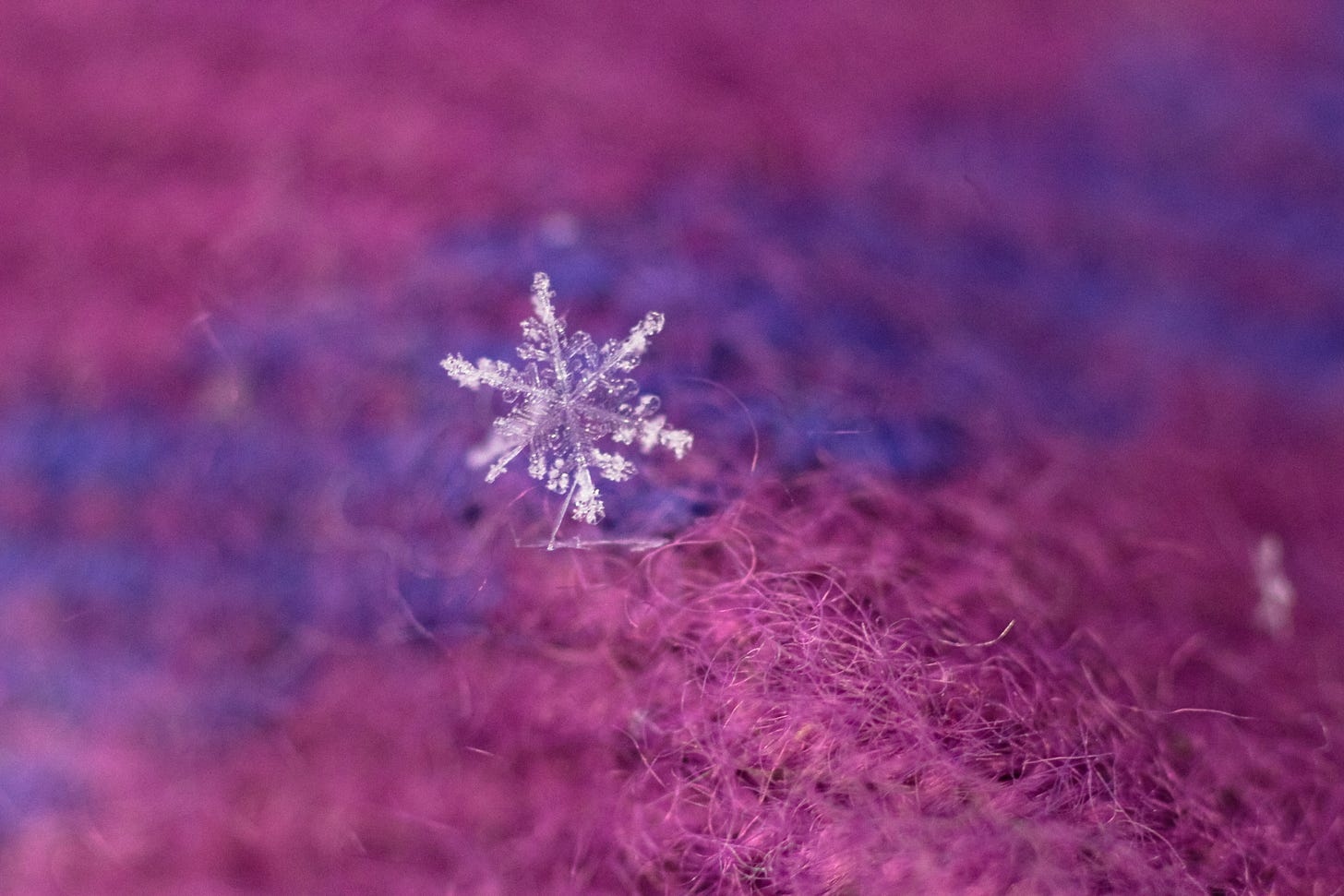
The tips of this snowflake have started to crystallize and branch further due to contact with a moister layer of the air as it fell to earth.
And the final problem of shooting snow? Especially freehand as I do? When you start to shiver, your ability to maintain focus on a depth of field that is no thicker than a sheet of paper goes out the window. Hah. I had to come in and warm up between sessions yesterday. Which is why you'll see two different backdrops. I use a scarf or a shawl to lay down as a backdrop for the snowflakes. I can't resolve a single flake from the white backdrop if I am trying to take a picture in situ, but I can if they fall on the cold cloth (I let it come down to ambient before shooting, or they melt while I am trying to focus).
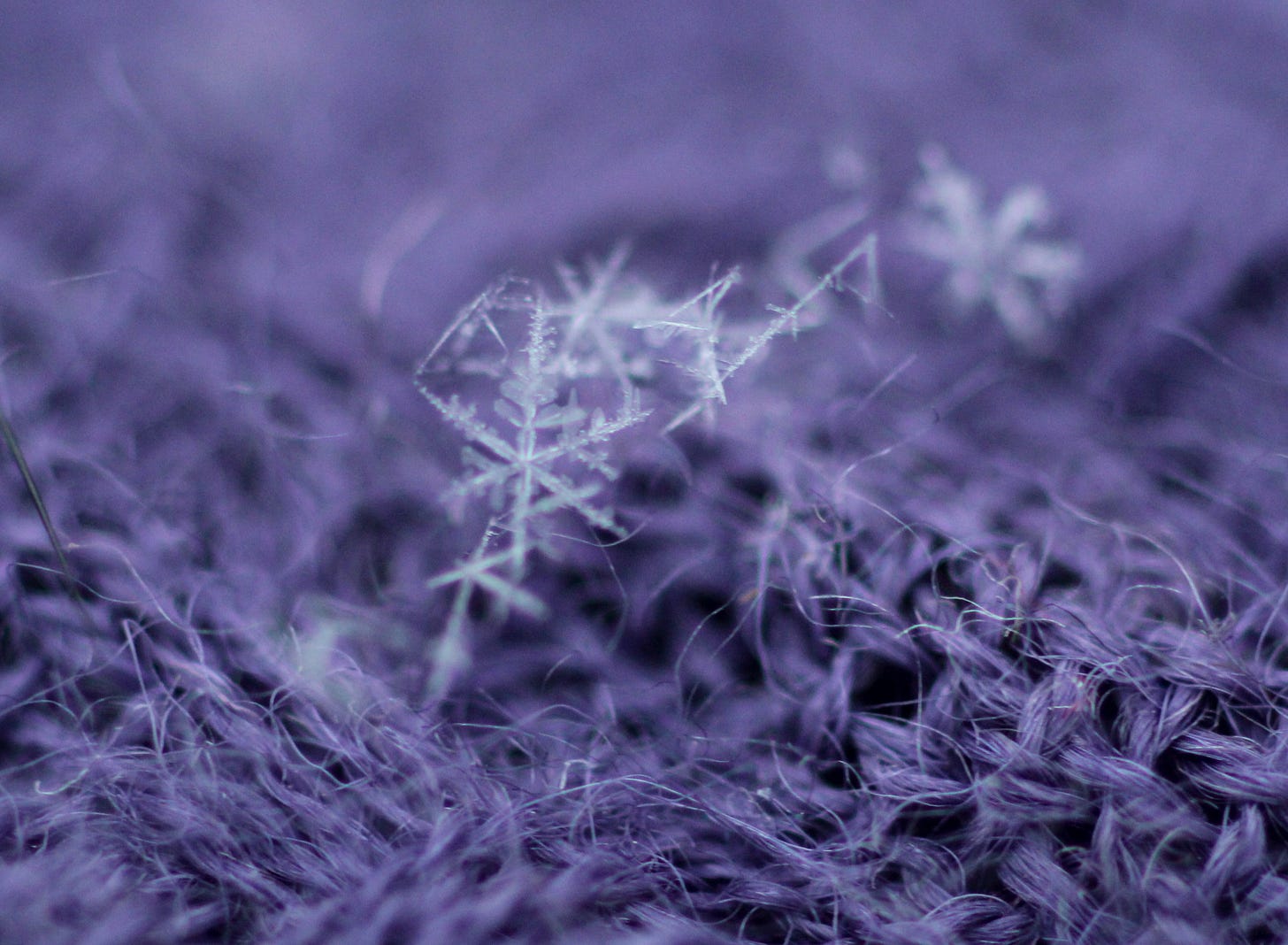
Big fat fluffy flakes, as we call them, are often several flakes entangled into a clump.
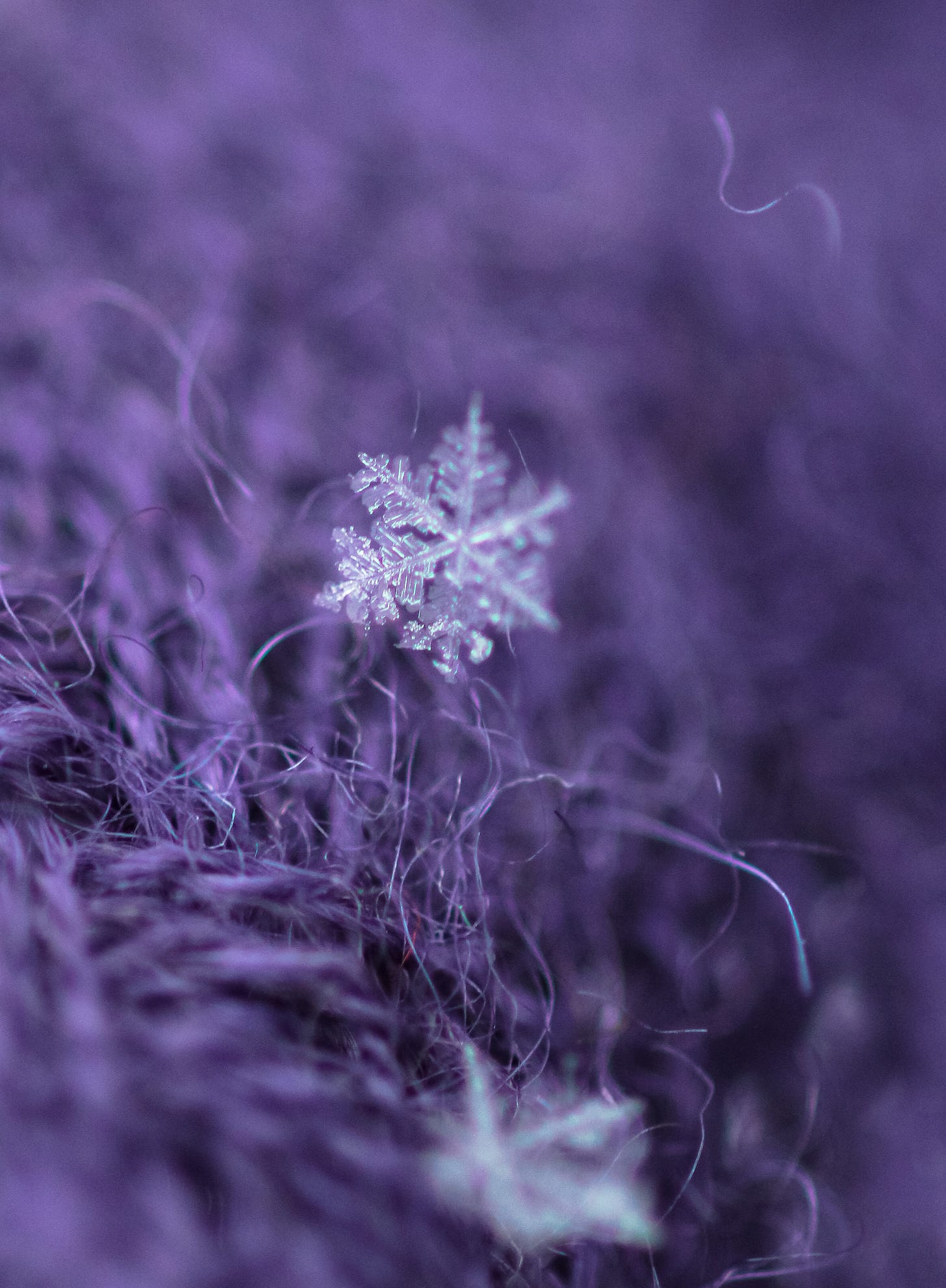
The tilted snowflake extends out of the plane of my depth of field on this rig.




